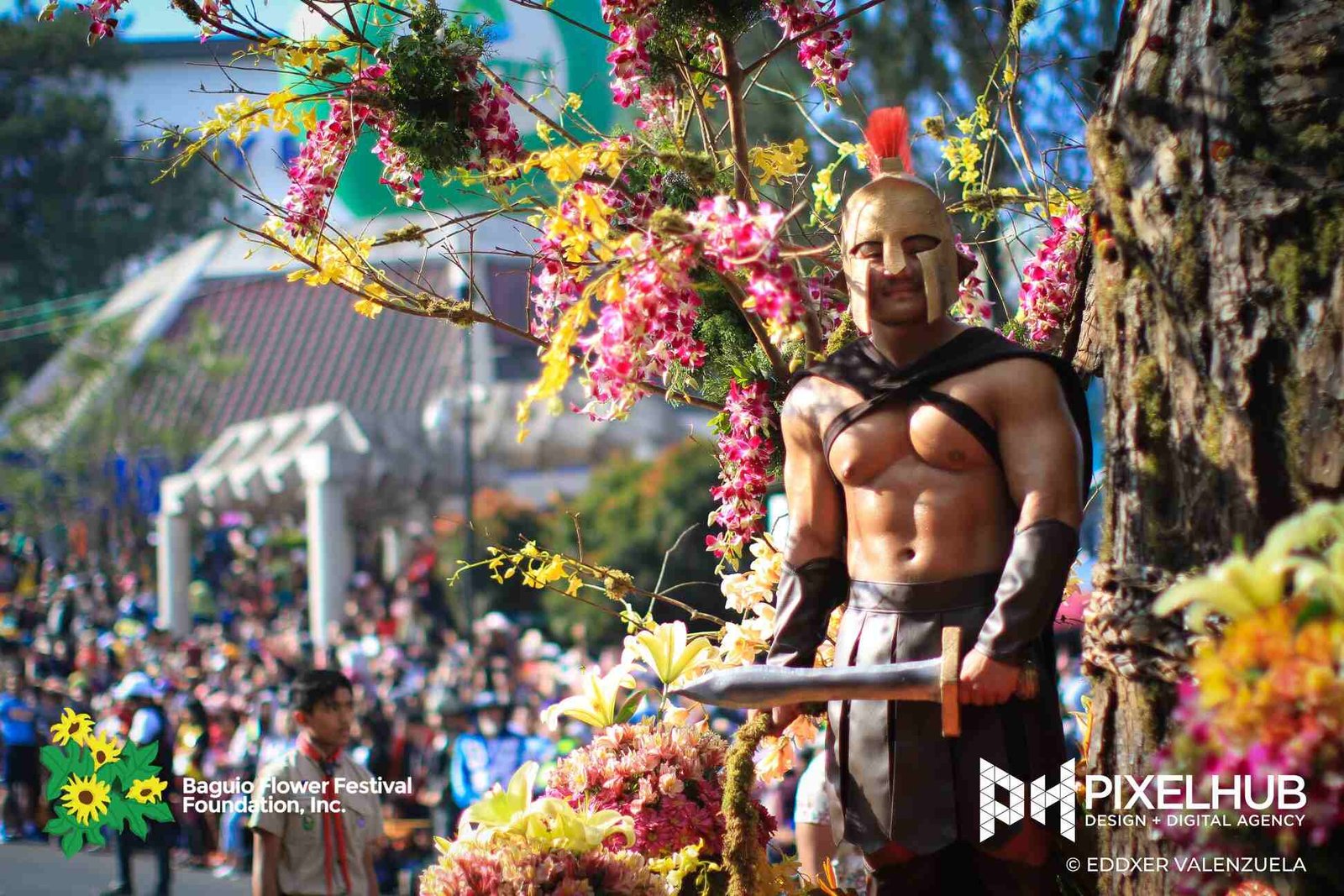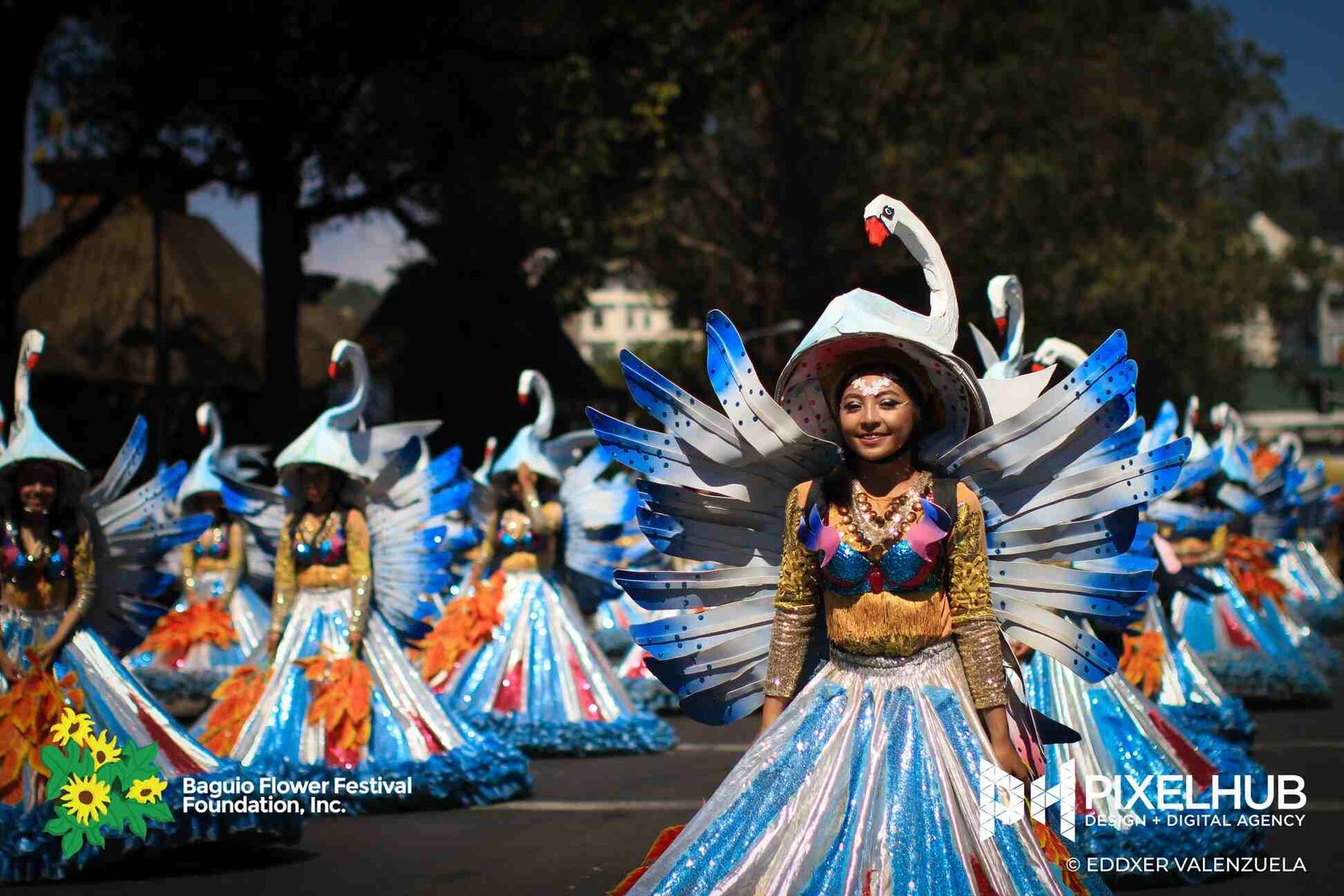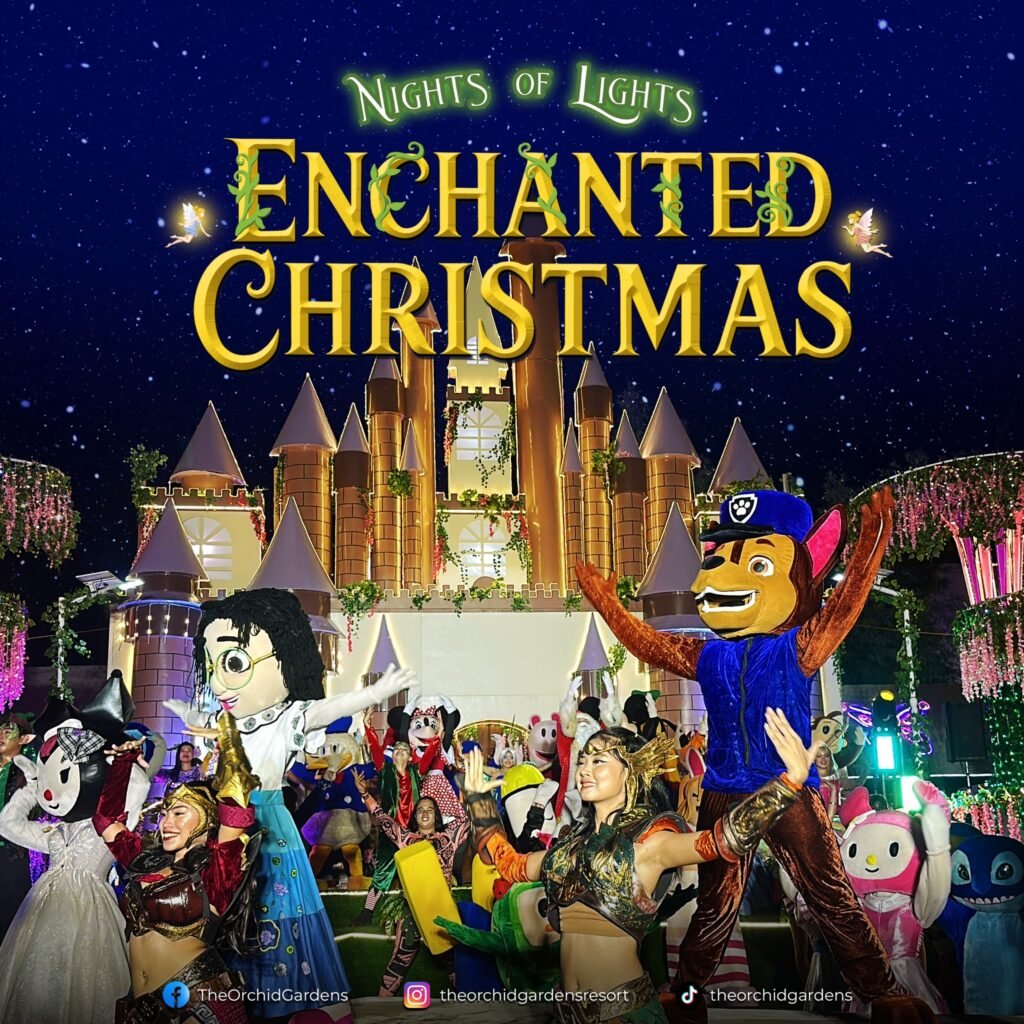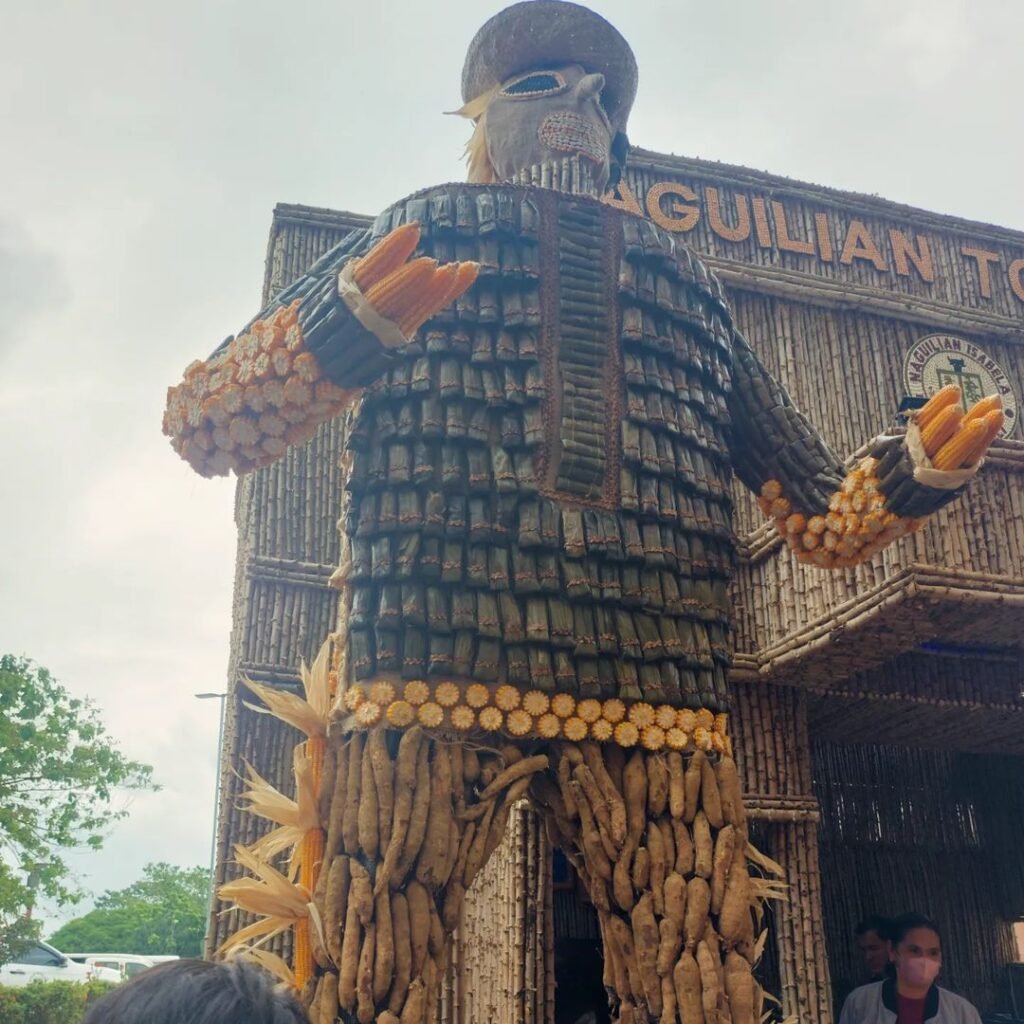The Panagbenga Festival, also known as the Baguio Flower Festival, stands as one of the Philippines’ most celebrated events, drawing visitors from across the globe to the vibrant city of Baguio. As we look forward to the Panagbenga Festival 2025, anticipation builds for a spectacular showcase of floral artistry and cultural heritage.
Originating in 1996, the Panagbenga Festival was conceived to revitalize Baguio City following the devastation of the 1990 Luzon earthquake. The term “Panagbenga” is derived from the Kankanaey language, meaning “season of blooming,” aptly reflecting the festival’s celebration of the city’s rich floral abundance. Held annually in February, the festival not only highlights Baguio’s status as the “Summer Capital of the Philippines” but also underscores its unique cultural identity.
The festival’s significance extends beyond its floral displays; it serves as a testament to the resilience and creativity of the Baguio community. Over the years, the Panagbenga Festival has evolved into a month-long celebration featuring grand parades, street dancing, and various cultural events, all set against the backdrop of Baguio’s cool mountain climate.
As the Panagbenga Festival 2025 approaches, preparations are underway to ensure that this year’s festivities surpass expectations, offering both locals and tourists an unforgettable experience that honors the city’s heritage and natural beauty.
Table of Contents
What is Panagbenga Festival?
The Panagbenga Festival, also known as the Baguio Flower Festival, is an annual celebration held in Baguio City, Philippines, every February. The term “Panagbenga” is derived from the Kankanaey language, meaning “season of blooming,” reflecting the festival’s focus on the city’s rich floral heritage.
History and Evolution
The festival was conceived in 1995 by lawyer Damaso E. Bangaoet Jr. as a means to boost tourism and revitalize Baguio City following the devastating 1990 Luzon earthquake. The inaugural event took place in February 1996, featuring a simple parade and street dancing. Over the years, the Panagbenga Festival has evolved into a month-long celebration, incorporating various activities such as the Grand Float Parade, street dancing competitions, and exhibitions that showcase the city’s culture and creativity.
Religious or Secular Nature
The Panagbenga Festival is a secular event, distinct from many other Philippine festivals that have religious origins. It was established primarily to celebrate Baguio’s floral industry and to promote tourism, without any religious affiliations. The festival’s activities focus on cultural performances, environmental awareness, and community involvement, highlighting the city’s unique identity and heritage.
Panagbenga Festival 2025: Full Schedule and Must-See Events 🌺
Get ready to experience a vibrant season of blooms with the Panagbenga Festival 2025! Whether you’re in it for the flower floats, dance performances, or Baguio’s delicious food markets, this guide will help you make the most of this incredible event. Here’s a breakdown of the Panagbenga Festival 2025 schedule, including the festival’s key dates and can’t-miss activities and events.
Panagbenga Festival 2025 Key Dates and Events
Here’s the official Panagbenga 2025 schedule so you can mark your calendars:
February 2025 Highlights
- February 1: Panagbenga Grand Opening Day Parade
- 🎉 Kick-off with street performances and cultural dance numbers!
- February 1 – March 2: Panagbengascapes: Landscaping Competition and Exhibition
- 🌿 Baguio’s green thumbs show off stunning garden landscapes.
- February 9: Handog ng Panagbenga sa Pamilya Baguio
- A heartwarming event dedicated to families with live entertainment and activities.
- February 13-15: PMA Grand Alumni Homecoming
- A parade featuring alumni of the Philippine Military Academy—expect marching bands and regalia!
Cultural and Floral Competitions
- February 15:
- Floral Bouquet Design Competition and Dish Garden Contest 🌸
- Rhythm of the Highlands: A Showcase of Culture and Dance 🎶
Grand Parade Week
- February 22: Panagbenga Grand Street Dance Parade
- 🌟 Street dancers in floral-inspired costumes take over the city!
- February 23: Panagbenga festival 2025 Grand Float Parade
- 🚛 Flower-filled floats make their grand appearance—an absolute must-see!
More Exciting Panagbenga Festival 2025 Activities and Events
- February 24 – March 2: Session Road in Bloom
- Stroll along the city’s famous Session Road lined with local food stalls, crafts, and entertainment.
- February 27: Fluvial Parade
- Watch as boats and mini-floats bring the floral theme to life on water!
- March 2:
- Closing and Awarding Ceremonies 🎖️
- Grand Aerial Fireworks Display 🎆
Why You Shouldn’t Miss Panagbenga 2025
The Panagbenga Festival 2025 isn’t just about flowers—it’s about culture, creativity, and community spirit. Whether you’re visiting Baguio for the parades or simply soaking up the festive atmosphere during Session Road in Bloom, there’s something for everyone.
Ready to experience the most colorful celebration in the country? The Panagbenga Festival 2025 dates are set, so pack your bags and prepare for an unforgettable time in the Summer Capital of the Philippines! 🌄 check the offical website of Panagbenga Festival for more information.
How to get to Panagbenga Festival
Getting to Panagbenga Festival in Baguio City is a vibrant experience that requires careful planning, especially regarding transportation and associated costs. Below is a detailed guide on how to reach Baguio from various locations, along with estimated travel expenses.
1. From Manila
By Bus: Several bus companies operate routes from Manila to Baguio, including Victory Liner and Genesis Transport. Buses depart from terminals in Pasay, Cubao, and Sampaloc. The journey typically takes 4 to 6 hours, depending on traffic and bus type.
Regular Air-Conditioned Bus: Fares range from ₱485 to ₱600.
First-Class/Deluxe Bus: Fares range from ₱720 to ₱800. These buses offer amenities such as onboard restrooms and fewer stops, reducing travel time.
It’s advisable to book tickets in advance, especially during the festival season.
By Private Vehicle: Driving to Baguio involves taking the North Luzon Expressway (NLEX), Subic–Clark–Tarlac Expressway (SCTEX), and Tarlac–Pangasinan–La Union Expressway (TPLEX). The journey covers approximately 250 kilometers and takes about 4 to 5 hours, depending on traffic.
Fuel Costs: Approximately ₱1,500 to ₱2,000, depending on vehicle fuel efficiency.
Toll Fees: Around ₱600 to ₱700 for the entire route.
Ensure your vehicle is in good condition, and consider the increased traffic during the festival.
2. From Clark International Airport
By Bus: From Clark, travelers can take a bus to the Dau Bus Terminal in Mabalacat, Pampanga, and then transfer to a Baguio-bound bus. The total journey takes approximately 4 to 5 hours.
- Bus Fare: Approximately ₱450 to ₱550.
By Private Vehicle: Driving from Clark to Baguio takes about 3 to 4 hours.
Fuel Costs: Approximately ₱1,000 to ₱1,500.
Toll Fees: Around ₱400 to ₱500.
3. From Other Luzon Provinces
By Bus: Several bus companies operate routes to Baguio from various Luzon provinces. Travel times and fares vary depending on the departure point.
- Example: From La Union, the bus fare is approximately ₱200 to ₱300, with a travel time of about 2 hours.
Additional Tips
Advance Booking: Due to the high influx of visitors during the Panagbenga Festival, it’s recommended to book transportation and accommodations well in advance.
Travel Insurance: Consider purchasing travel insurance for added protection during your trip.
Check Schedules: Bus and flight schedules may change during the festival period. Confirm timings ahead of your trip.
By planning ahead and considering these transportation options and associated costs, you can ensure a smooth journey to the Panagbenga Festival and fully enjoy the vibrant celebrations in Baguio City.
Panagbenga Festival Events and Activities
The Panagbenga Festival, also known as the Baguio Flower Festival, is a month-long celebration in Baguio City that showcases a variety of vibrant events and activities. These festivities highlight the city’s rich cultural heritage and the natural beauty of its floral abundance.
Major Events:
Grand Float Parade: A highlight of the festival, this parade features intricately designed floats adorned with a myriad of flowers, showcasing the creativity and artistry of participants. Each float represents different themes, often reflecting cultural stories or contemporary concepts.
Street Dancing Parade: Performers dressed in colorful Panagbenga Festival costumes participate in lively street dances, moving rhythmically to traditional music. These performances often depict local folklore and traditions, providing spectators with a glimpse into the region’s cultural richness.
Session Road in Bloom: During this event, Baguio’s main thoroughfare, Session Road, transforms into a pedestrian-friendly zone lined with stalls offering local products, food, and crafts. It’s an excellent opportunity for visitors to experience the local cuisine and purchase unique souvenirs.
Unique Activities:
Cultural Shows: Various cultural performances are held throughout the festival, including traditional dances, music, and theater, highlighting the diverse heritage of the Cordillera region.
Art Exhibitions: Local artists showcase their works in multiple venues, offering visitors a chance to appreciate and purchase pieces that reflect the region’s culture and natural beauty.
Food Festivals: Culinary events feature a wide array of local delicacies and international cuisines, allowing attendees to indulge in the rich flavors of Baguio and its neighboring provinces.
Floral Exhibitions: Gardens and parks are adorned with elaborate floral arrangements and landscaping exhibits, demonstrating the horticultural skills of local gardeners and enthusiasts.
Barangay Gardenscape: A competition among local communities to create the most beautiful and innovative garden displays, fostering community involvement and environmental awareness.
These events and activities make the Panagbenga Festival a vibrant and immersive experience, celebrating both the cultural and natural treasures of Baguio City.
Panagbenga Festival in Baguio – Travel Tips and Accommodations
Attending the Panagbenga Festival in Baguio City is a vibrant experience that offers a glimpse into the rich cultural heritage of the Philippines. To ensure a memorable visit, consider the following travel tips and accommodation options:
Travel Tips for First-Time Visitors:
Plan Ahead: The Panagbenga Festival attracts numerous visitors, leading to increased demand for accommodations and transportation. It’s advisable to book your stay and transportation well in advance to secure the best options.
Arrive Early: Major events, such as the Grand Float Parade and street dancing, draw large crowds. Arriving early ensures a good viewing spot and allows you to fully enjoy the festivities.
Dress Comfortably: Baguio’s climate is cooler than other parts of the Philippines, especially in February. Wear layered clothing to stay comfortable throughout the day.
Stay Informed: Keep an eye on the official Panagbenga Festival schedule to stay updated on event times and locations. This will help you plan your itinerary effectively.
Secure Your Belongings: With large crowds, it’s essential to be vigilant about your personal belongings. Use secure bags and avoid bringing unnecessary valuables.
Accommodation Options:
For a range of budgets, Baguio City offers various accommodations:
High-End Hotels:
- The Manor at Camp John Hay: Offers luxurious rooms with scenic views and top-notch amenities.
- Baguio Country Club: Known for its historic charm and exclusive services.
Mid-Range Hotels:
- Hotel Veniz: Centrally located with comfortable rooms and easy access to festival venues.
- Microtel by Wyndham Baguio: Offers modern amenities and is conveniently situated near shopping centers.
Budget Accommodations:
- Metro Pines Inn: Provides affordable rooms within walking distance to Burnham Park.
- Goshenland North Cambridge Condominium Harvard: Ideal for travelers seeking a homely atmosphere away from the festival’s hustle and bustle.
How to Enjoy the Panagbenga Festival Like a Local
Experiencing the Panagbenga Festival like a local allows you to fully immerse yourself in Baguio City’s vibrant culture and festivities. Here are some insider tips to help you make the most of your visit:
1. Secure Prime Viewing Spots for Parades
Arrive Early: Major events, such as the Grand Float Parade and street dancing, attract large crowds. Arriving early ensures a good viewing spot and allows you to fully enjoy the festivities.
Choose Strategic Locations: Opt for spots along Session Road or near Burnham Park, as these areas offer expansive views of the parades. Elevated areas like overpasses can also provide unique vantage points.
2. Navigate and Avoid Crowds
Attend Weekday Events: Some festival activities are scheduled on weekdays, which typically have smaller crowds compared to weekends.
Explore Alternative Routes: Familiarize yourself with Baguio’s side streets and alleys to navigate around congested areas during peak festival times.
3. Savor Local Cuisine
Visit the Night Market: Located along Harrison Road, the night market offers a variety of street food, including local delicacies like strawberry taho and grilled corn.
Dine at Local Eateries: Experience authentic Cordilleran dishes by dining at local restaurants and food stalls. Don’t miss trying pinikpikan, a traditional chicken dish, and ube jam from Good Shepherd Convent.
4. Engage in Local Shopping
Explore Session Road in Bloom: During the festival, Session Road transforms into a pedestrian-friendly zone lined with stalls offering local products, food, and crafts. It’s an excellent opportunity for visitors to experience the local cuisine and purchase unique souvenirs.
Visit the Baguio Public Market: Here, you can find fresh produce, handicrafts, and souvenirs at reasonable prices. It’s a great place to purchase pasalubong (souvenirs) like woven products and local delicacies.
5. Participate in Cultural Activities
- Attend Workshops and Exhibitions: The festival often features workshops on traditional crafts and art exhibitions showcasing local talent. Participating in these activities provides a deeper understanding of Baguio’s rich cultural heritage.
By following these tips, you can experience the Panagbenga Festival in a way that goes beyond the typical tourist perspective, allowing you to appreciate the event through the eyes of a local.
Additional Information
For more details, updates, and official announcements about the Panagbenga Festival, you can visit the following resources:
Official Panagbenga Festival Website: https://www.panagbengaflowerfestival.com
Here, you’ll find the full schedule, history, and latest updates about the festival.Baguio Flower Festival Facebook Page: https://www.facebook.com/baguioflowerfestival
Follow this page for live updates, event highlights, and community interactions related to the Panagbenga Festival.
These resources will provide you with up-to-date information, helping you plan and experience the Panagbenga Festival to the fullest!
Conclusion
The Panagbenga Festival, also known as the Baguio Flower Festival, is a vibrant celebration that showcases the rich cultural heritage and natural beauty of Baguio City. Held annually in February, this month-long event features a variety of activities, including the Grand Float Parade adorned with intricate floral designs, lively street dancing in traditional costumes, and numerous cultural shows and exhibitions. These festivities not only highlight the city’s floral abundance but also promote tourism and foster community pride.
As we look forward to the Panagbenga Festival 2025, it’s an opportune time to plan your visit to experience the vibrant culture of Baguio City firsthand. Whether you’re captivated by the artistic floral floats, eager to taste local delicacies, or interested in exploring the city’s attractions, the festival offers a unique and enriching experience for all. Mark your calendars and prepare to immerse yourself in the colorful celebrations of the Panagbenga Festival 2025.
Frequently Asked Questions (FAQs) about the Panagbenga Festival
1. What is the origin of the term “Panagbenga”?
“Panagbenga” is derived from the Kankanaey language, meaning “season of blooming.” This term reflects the festival’s celebration of the blooming flowers in Baguio City and the cultural heritage of the Cordillera region.
The Panagbenga Festival began in 1995 as a means to boost the morale of Baguio City’s residents and revitalize the local economy following the devastating 1990 Luzon earthquake. The festival was conceptualized to showcase the city’s floral beauty and cultural diversity.
No, the Panagbenga Festival is a secular event. It focuses on celebrating the natural beauty and cultural heritage of Baguio City and the Cordillera region, without religious affiliations.
Key highlights include:
Grand Float Parade: Featuring intricately designed floats adorned with a variety of flowers.
Street Dancing Parade: Showcasing performers in vibrant costumes performing traditional dances.
Session Road in Bloom: Transforming the city’s main thoroughfare into a pedestrian-friendly zone with stalls offering local products, food, and crafts.
5. When is the Panagbenga Festival celebrated?
The Panagbenga Festival is celebrated annually throughout the month of February, with major events typically occurring in the last week of the month.










When is the scheduled date of Panagbenga 2025 float parade
Most likely feb 23 Sunday. you can check the schedule here. https://www.panagbengaflowerfestival.com/event-directory/
kAilan po ang grand float parade?
The Grand Float Parade of the Panagbenga Festival is usually held during the last week of February. In 2024, it took place on February 25.
For 2025, it is expected to happen around the same period Feb 23 sunday, but it is best to wait for the official announcement from the Baguio Flower Festival Foundation Inc. (BFFFI) or the local government of Baguio for the exact date and details. https://www.panagbengaflowerfestival.com/event-directory/
Exact location where the parade will take place?